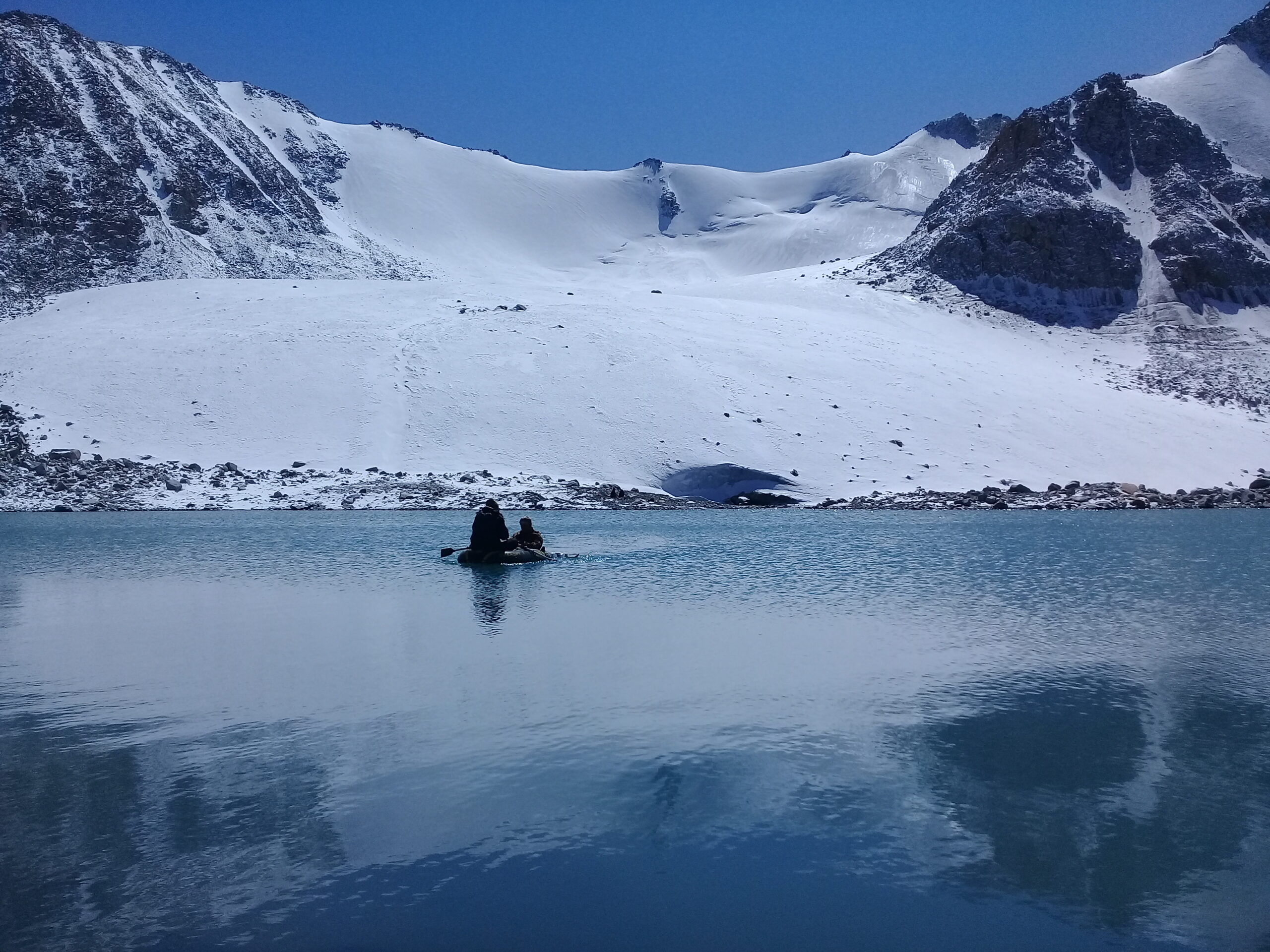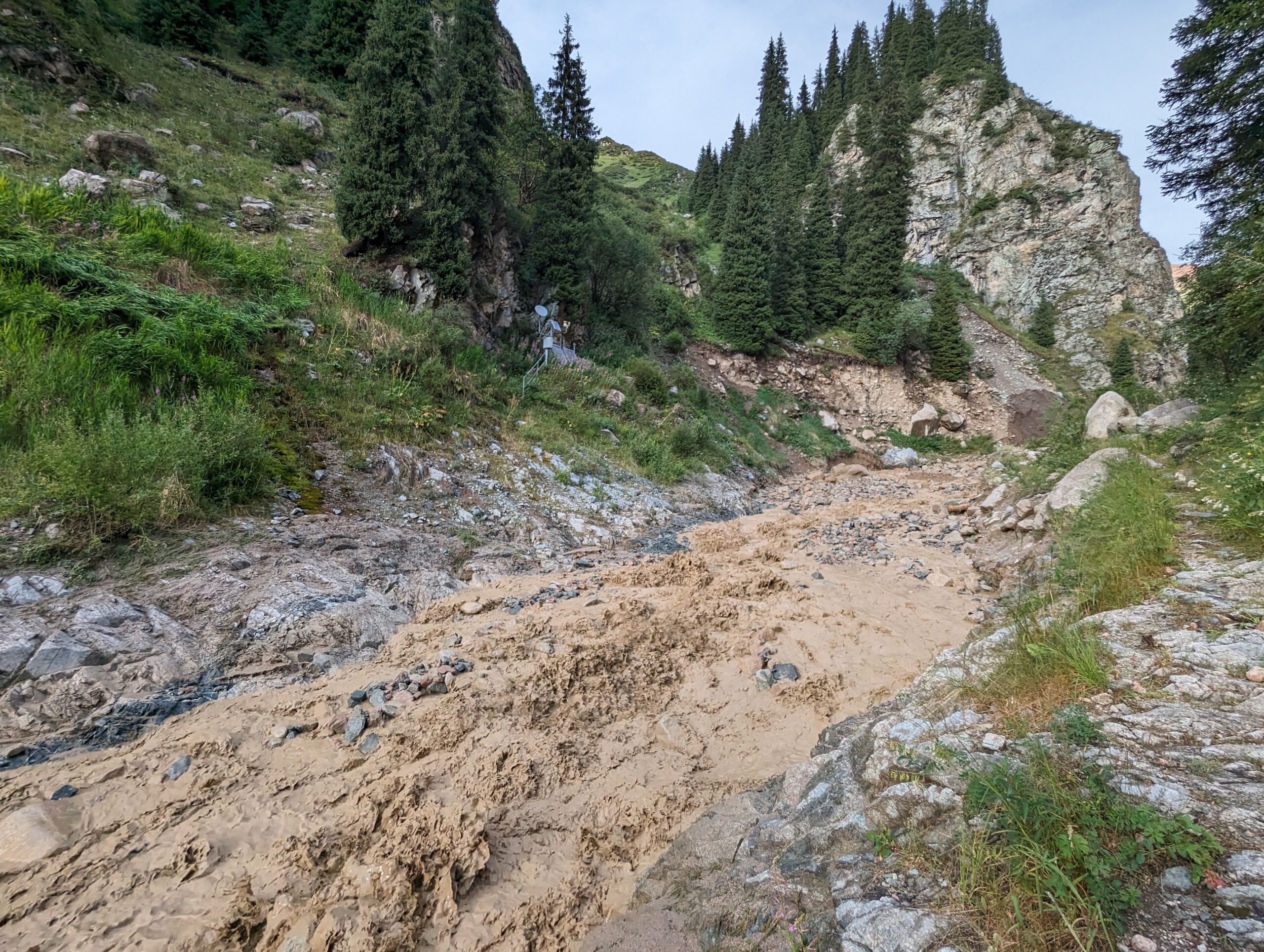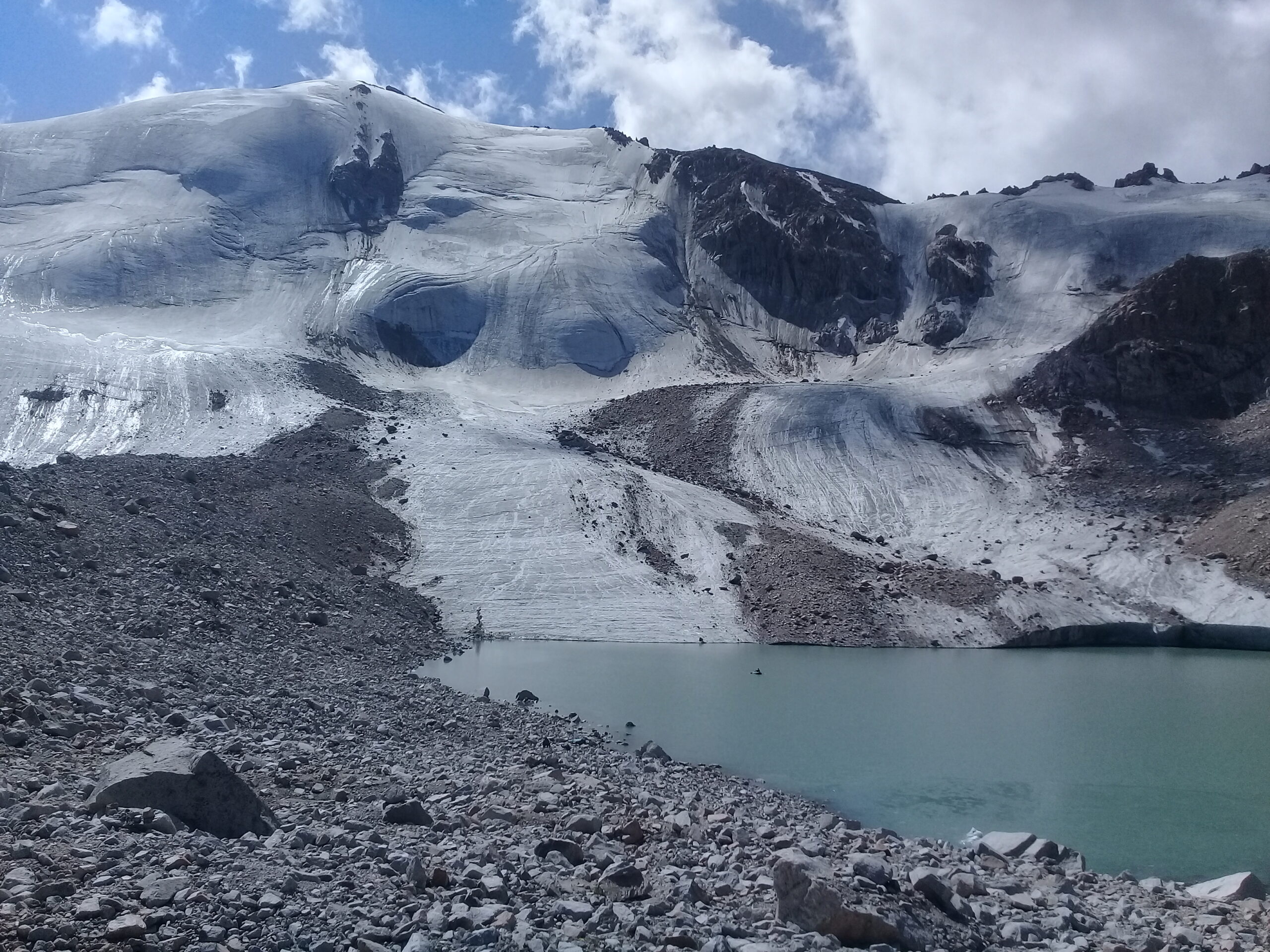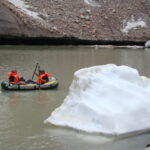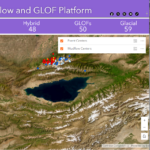Glacial Lake Outburst Floods (GLOF) and debris flows threaten life and infrastructure in mountains and on the adjacent plains. Central Asia is one of the regions at risk. In glacierized catchments of the Tien Shan and Pamir mountains, intensive melting of glaciers causes the expansion of glacier lakes and can potentially enhance the formation of GLOF. Steep slopes, heavy precipitation, rapid snowmelt, and abundance of unconsolidated material facilitate the formation of non-outburst debris flows. Climatic warming results in a higher frequency of liquid precipitation extending the debris flow season and shifting the debris flow zone to higher elevations.
Historically, settlements in the foothills of the Tien Shan and Pamir were damaged by the GLOF-related debris flows which were particularly frequent in the region in the 1970s and 1980s. In July 1973, GLOF in the Kishi Almaty River basin, Kazakhstan, caused extensive damage to infrastructure and human casualties. In 1988, GLOF in the Shakhimardan River basin, Uzbekistan, resulted in numerous fatalities as did GLOF in the Dasht region of Tajikistan in 2002. Mitigation of the GLOF-related risks involves detailed documentation of the observed changes in the extent and abundance of glacial lakes and assessments of the risks of outburst. In the longer-term perspective, risks can be mitigated via planning based on the projections of lake formation following glacier retreat in the future. The provision of early warning based on the reliable forecast of precipitation and snow melt is required to mitigate risks of non-outburst debris flows.
To address these challenges, our group work is partnership with research institutions and disaster risk reduction agencies in Central Asia and in close collaboration with the European Centre for Medium-range Weather Forecasts (ECMWF).
